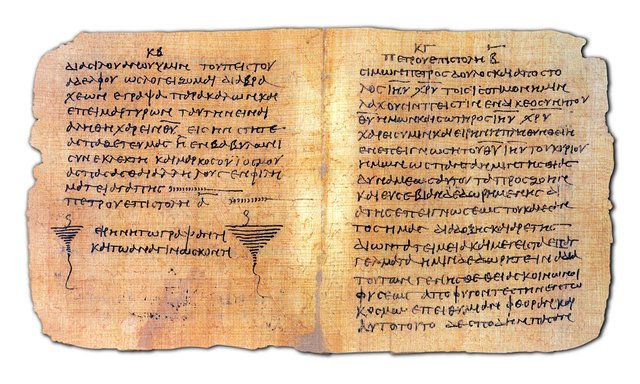The parchment
The papyrus remained unchallenged as a writing material until the second century BC, then it arose competition in the parchment. This consists of depilated, smoothed and specially treated animal skin of donkeys, goats or cattle, hence the Latin term membrana, thin animal skin, for this writing material. Such animal skins have also been used for writing, especially for shorter texts, in the form of notebooks instead of simple wax tablets. The papyrus, however, remained the nobler writing material. In the second century BC, however, one of the Ptolemäerkönige decreed an export ban on papyrus, of which especially the competition library of Alexandria, felt in Pergamon affected. The local King Eumenes II then launched a research project and had a better and easier process develop that enabled the mass production of animal skins as a writing material. This was therefore named parchment.
It is "coded"
The advantages were obvious: the material was more resistant, and it was easy to label on both sides. And you could staple it in layers and turn it around, which was especially important for reference works and the now emerging law collections of lawyers. The codex, the book attached to parchment leaves, gradually replaced the papyrus scroll from the first centuries AD; it remained the common book form in the Middle Ages, until then, since the 13th century, the paper - first invented in China - prevailed. Lawyers throughout the empire now began to collect the imperial laws and regulations and rewrite them into the new book form: they "codified the law." The Codex Justinianus, published in 534, became the foundation of Roman law. But not only the lawyers used the parchment, the publishers and librarians everywhere began eagerly with the transcription of their book collections. Martial recommends his poems, which have now been published as Neuausage in a practical little Codex, as a convenient travel guide - the forerunner of our paperback. "Other books are filling the cupboard, I am handy," Martial says, and tells us where to buy it in Rome: at the bookseller Secundus at the Temple of Peace. There was also martial Livy, in a short form.
The classics as "Reader's Digest"
The 142 scrolls of Livy's history hardly fit into a private bookcase, not even Codice's. And so, with the inscription into the new book form, the excerpts from the great classical works also came up. The abstracts often displace the original. Livy's epochs of history that were not read at school are only extant. One could comfortably carry such selection editions everywhere, as Emperor Julian Apostata did. He was a bookish from an early age and also had his books in the camp.

